Overview
The article highlights the pivotal trends shaping wellness real estate in 2025, emphasizing the surging consumer demand for health-oriented living environments alongside the anticipated substantial market growth. Notably, data indicates that the market's valuation is projected to rise from approximately USD 517.2 billion in 2024 to an expected USD 1.1 trillion by 2029. This growth is fueled by features such as biophilic design, health-centric amenities, and community-focused developments that significantly enhance both physical and mental well-being.
As investors, understanding these trends is crucial. The integration of wellness-oriented features not only meets consumer demand but also positions properties as desirable investments. The projected increase in market valuation underscores the potential for lucrative returns, making it an opportune time to consider investments in this sector.
In conclusion, the wellness real estate market presents a compelling opportunity for savvy investors. By leveraging the insights shared, stakeholders can make informed decisions that align with the evolving preferences of consumers, ultimately driving successful investment strategies.
Introduction
The wellness real estate market stands on the cusp of a transformative surge, with projections indicating a remarkable growth trajectory that could redefine living spaces by 2025.
Health-conscious consumers are increasingly prioritizing environments that enhance their physical and mental well-being.
In response, developers are integrating innovative features and sustainable practices into their projects.
However, amidst this promising expansion lies a critical question: how will the evolving demands for health-centric amenities and community-focused designs shape the future of real estate investment?
This exploration delves into the key trends poised to influence wellness real estate, offering insights into the opportunities and challenges that lie ahead.
Zero Flux: Essential Insights on Wellness Real Estate Trends
Zero Flux is at the forefront of delivering essential insights into health property trends. By aggregating information from over 100 sources, including those behind paywalls, it provides a comprehensive overview of the latest advancements in the health property sector. This commitment to objective reporting ensures that subscribers receive reliable information, enabling them to navigate the evolving landscape of wellness real estate.
The health property market was valued at approximately USD 517.2 billion in 2024 and is projected to reach USD 944.11 billion by 2030, growing at a compound annual growth rate (CAGR) of 12.60%. Notably, North America commands over 40% of this market share and is anticipated to expand by USD 248.49 billion in 2025, fueled by increased health awareness and a robust economy. The integration of health-centric features in both residential and commercial spaces is becoming increasingly prevalent, with developers focusing on biophilic design and sustainable materials to enhance wellness real estate for occupants.
Case studies exemplify this trend: for instance, Skanska plans to launch several wellness real estate projects in the U.S. in 2025, including a WELL pre-certified office building that prioritizes tenant health. Moreover, the Asia Pacific region is experiencing significant growth, with its health-oriented real estate market valued at USD 157.65 billion in 2024 and expected to exceed USD 574.34 billion by 2032.
As consumer awareness of the health impacts of living environments rises, the demand for wellness real estate that promotes holistic well-being is surging. This shift is evident in the growing appeal of wellness real estate, which incorporates mixed-use developments that blend living, working, and recreational spaces, fostering community health.
However, the health-focused property market is confronted with challenges, including elevated construction costs attributed to specialized materials and advanced technologies required for health features.
In summary, Zero Flux not only highlights these critical trends but also serves as an invaluable resource for property investors seeking to navigate the complexities of the health-focused property market in 2025.
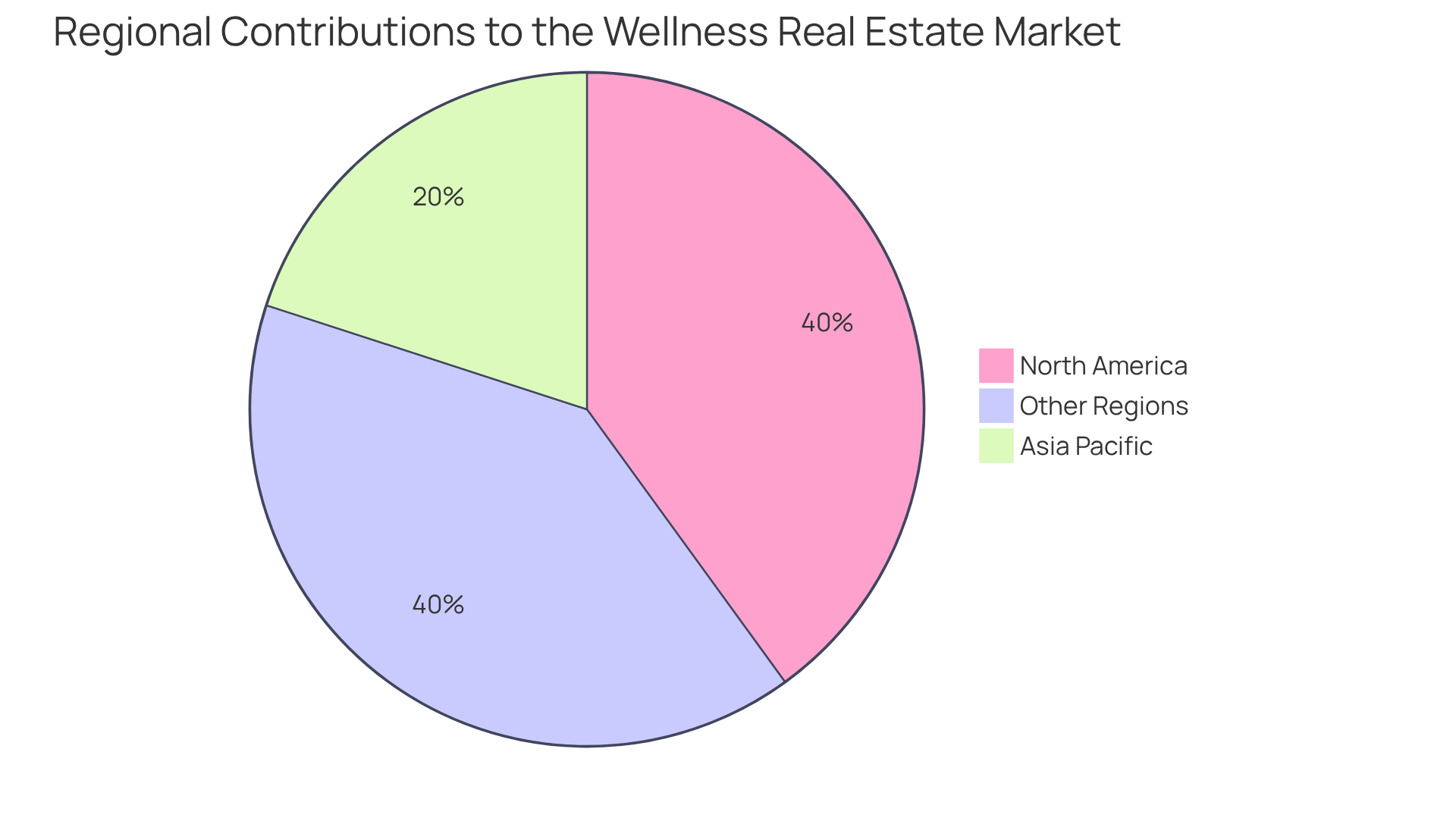
Health-Centric Amenities: Driving Demand in Wellness Real Estate
Health-focused amenities are swiftly becoming essential in the wellness real estate landscape. Features such as fitness centers, yoga studios, and access to nutritious food options are not merely attractive; they are crucial for buyers pursuing a holistic lifestyle. Properties that are part of the wellness real estate sector often experience heightened demand and can command premium prices. Wellness real estate projects typically achieve a 10-20% price premium compared to traditional offerings. This trend is underscored by the fact that nearly 45% of luxury homebuyers in high-demand areas prioritize health-related amenities, reflecting a significant shift in consumer preferences.
Successful properties, including Serenbe in Atlanta and Rancho Sahuarita in Arizona, are integrating health-focused features that enhance residents' quality of life. For instance, developments with fitness facilities and health programs report improved occupancy rates and increased rental yields, making them financially rewarding for developers. The Global Wellness Institute has assessed the health real estate sector at $398 billion, with forecasts suggesting that the global health market will expand to $8.5 trillion by 2027. This emphasizes strong market potential.
Expert insights from Yael Geffen, CEO of Lew Geffen Sotheby’s International Realty, highlight that as the global population becomes increasingly health-conscious, particularly post-COVID-19, the demand for wellness real estate communities is expected to grow. This shift transcends luxury; it is about creating environments that support physical, mental, and emotional well-being. The incorporation of health-focused features is therefore set to transform the values of wellness real estate and consumer interest in 2025 and beyond. Investors are urged to evaluate real estate with health certifications or attributes, as these are expected to generate greater returns and satisfy the changing needs of homebuyers.

Sustainability and Biophilic Design: Key Elements of Wellness Real Estate
Sustainability and biophilic design play a crucial role in shaping the wellness real estate market. The incorporation of natural materials, abundant natural light, and green areas not only enhances the visual appeal of buildings but also significantly contributes to improved mental health. A 2023 report from the National Association of Realtors reveals that 73% of homebuyers prioritize energy efficiency, reflecting a growing consumer preference for environmentally responsible residences. Consequently, developments that emphasize sustainability are gaining a competitive edge in the market.
Biophilic design, fostering a connection between occupants and nature, is increasingly recognized for its benefits. This design approach incorporates elements such as natural patterns, water features, and indoor plants, all of which contribute to enhanced air quality and reduced stress levels. For instance, case studies from Baumann Consulting’s WDC Office demonstrate how biophilic design elements, including green walls and natural materials, create visually appealing environments that elevate occupant satisfaction and well-being.
Looking ahead to 2025, the health property market is projected to expand considerably, with estimates suggesting a 52% rise, reaching a total worth of $8.5 trillion. This growth is driven by the increasing demand for wellness real estate that not only meets aesthetic standards but also prioritizes occupant health and environmental sustainability. As institutional investors increasingly require ESG compliance—85% now mandate it—developers are compelled to adopt sustainable practices that align with these expectations.
Incorporating biophilic design strategies not only supports health and productivity but also aids projects in achieving additional points toward LEED and WELL certifications. By 2025, assets that effectively integrate these components are anticipated to attract premium prices and heightened tenant interest, establishing sustainability as a fundamental aspect of the health-focused housing sector.
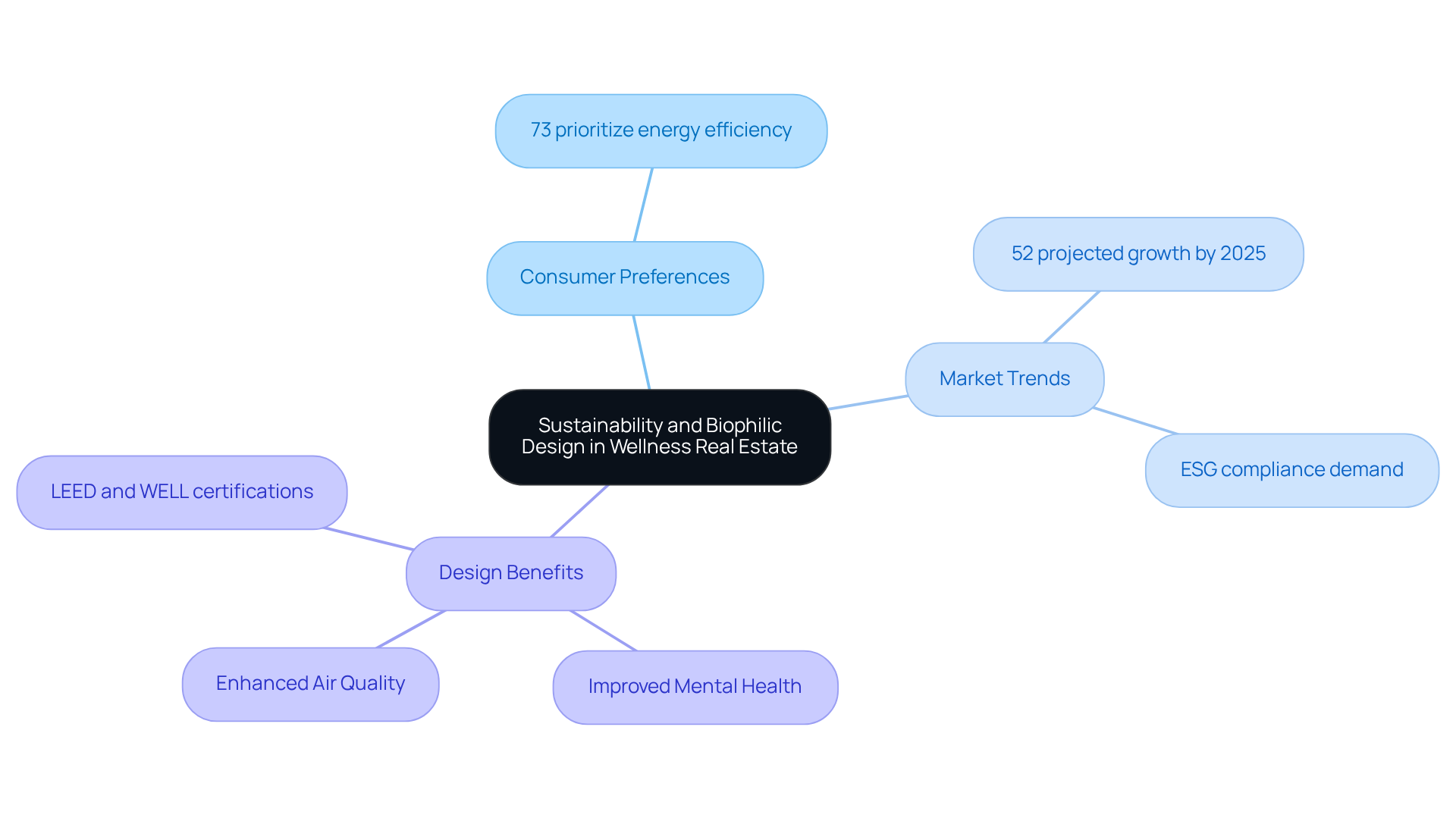
Virtual Fitness Solutions: Transforming Wellness Integration in Real Estate
Virtual fitness solutions are revolutionizing the integration of health into wellness real estate. The emergence of on-demand fitness classes and virtual training programs enables properties that provide these amenities to attract a wider audience. This trend not only fulfills the growing demand for convenience but also enhances the overall health experience for residents. Consequently, it serves as a significant enhancement to any development in wellness real estate, making it an essential consideration for forward-thinking investors.

Wellness-Integrated Communities: A New Paradigm in Real Estate Development
Wellness real estate is transforming property development by focusing on physical health, social connections, and mental wellness. These communities feature shared spaces, walking paths, and community gardens that encourage interaction and cultivate a sense of belonging. As consumer interest in wellness real estate escalates, developers are responding by creating environments that prioritize holistic well-being.
For instance, Aldar Development's remarkable success in the UAE, achieving over $8 billion in residential sales in 2023, underscores the market's demand for wellness real estate designs. CEO Jonathan Emery noted that this success stems from a commitment to embedding health into the very fabric of community living. Furthermore, forecasts indicate that the global health economy is projected to expand significantly, approaching $6.8 trillion by 2024, with the health property market estimated at around $438 billion in 2023 and expected to rise to nearly $913 billion by 2028.
This shift reflects a broader recognition that effective community designs not only enhance quality of life but also elevate wellness real estate value, rendering them increasingly attractive to homebuyers and investors alike.

Mental and Emotional Wellness: Influencing Real Estate Design Trends
The impact of mental and emotional health on real estate design is increasingly significant. Developers are prioritizing features that foster tranquility and reflection, such as:
- Quiet spaces
- Abundant natural light
- Soothing color palettes
These elements not only enhance the visual appeal of buildings but also support the mental well-being of residents. Research indicates that residences designed with health considerations can command a price premium of 10-25%, highlighting their attractiveness to health-focused buyers. Comprehensive studies further demonstrate that health-oriented residential spaces yield greater returns.
As the wellness real estate market expands, projected to reach approximately $913 billion by 2028—representing a compound annual growth rate (CAGR) of 15.8%—the integration of emotional health features becomes essential for developers seeking to differentiate themselves. Case studies reveal that environments incorporating biophilic design—where natural elements are integrated into the built environment—significantly enhance residents' emotional well-being. For instance, a recent project illustrated how the inclusion of indoor gardens and natural light resulted in increased resident satisfaction and reduced stress levels.
Expert insights underscore the necessity of creating spaces that resonate emotionally with occupants. Oliver Heath emphasizes that utilizing calming colors and natural materials can evoke feelings of peace and comfort, increasing property appeal. As market dynamics shift, understanding the influence of design on emotional health will be crucial for developers aiming to meet the expectations of contemporary buyers, who increasingly prioritize mental well-being in their living environments. Additionally, it is vital to consider the regulatory challenges that may hinder the growth of health-focused properties, as local regulations can sometimes obstruct the integration of innovative health features.
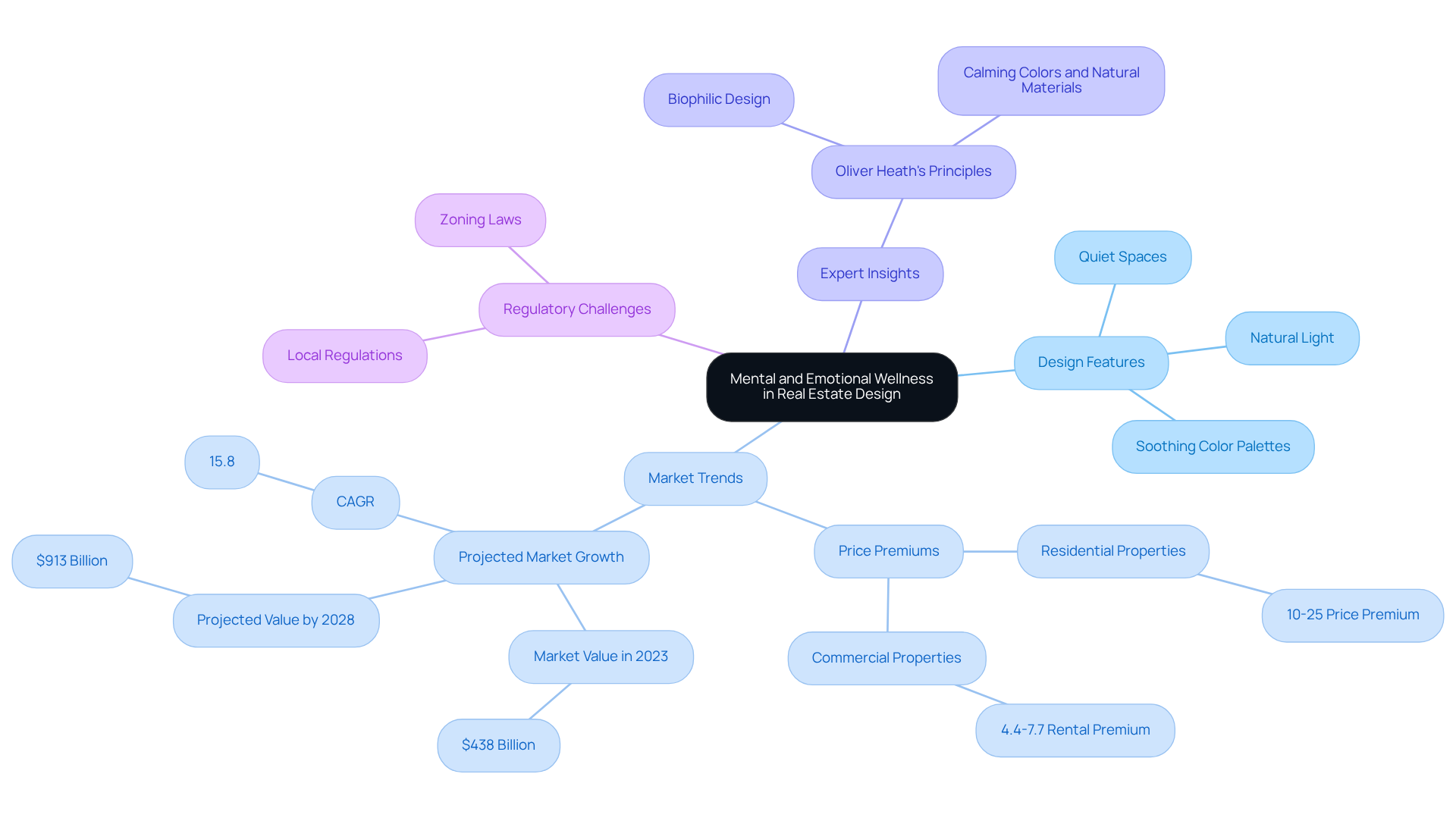
Green Spaces: Enhancing Wellness in Real Estate Developments
Green areas are pivotal in enhancing health within property developments. Access to parks, gardens, and natural landscapes not only improves air quality but also offers residents opportunities for physical activity and relaxation. Properties that incorporate these green spaces tend to attract more buyers, resulting in elevated property values and heightened resident satisfaction. This correlation underscores the strategic importance of integrating green areas into real estate investments, ultimately benefiting both developers and residents alike.

Community and Social Architecture: Building Connections in Wellness Real Estate
Community and social architecture are pivotal in wellness real estate, as developers increasingly recognize the importance of creating environments that promote social interaction. Features such as communal lounges, shared kitchens, and event spaces are not merely aesthetic choices; they are crucial for cultivating a sense of belonging among residents. This connectivity is essential for mental health and overall well-being, establishing it as a fundamental aspect of modern real estate development.
Research shows that properties incorporating social spaces experience higher resident satisfaction and retention rates. For example, buildings designed with communal areas encourage collaboration and relaxation, thereby enhancing tenant engagement. A case study on the Round development in London, designed by Foster + Partners, exemplifies this trend by prioritizing health through community-focused design.
Moreover, the Global Wellness Institute underscores that wellness real estate is not solely focused on physical attributes but also on creating environments that promote social well-being. As more individuals seek wellness real estate that enhances their overall wellness, the demand for spaces with integrated social areas is expected to rise. This shift highlights the growing recognition that thoughtfully designed communal spaces can significantly enhance the living experience, making them indispensable in the evolving landscape of health-focused properties.

Data-Driven Solutions: Innovating Wellness Real Estate Development
Data-driven solutions are revolutionizing health-oriented land development by leveraging analytics to interpret market trends, consumer preferences, and asset performance. This strategic application of data empowers developers to make informed decisions that not only enhance the value and appeal of their projects but also ensure alignment with the evolving demands of health-conscious consumers. For instance, AI-driven analytics can predict optimal rental pricing, potentially increasing revenue by 9%, while also identifying maintenance needs before they escalate, thus improving tenant satisfaction.
Given that the wellness real estate market was valued at USD 486.7 billion in 2024 and is projected to exceed USD 1,770.48 billion by 2032, the integration of data analytics is crucial for developers looking to capitalize on this trend. Moreover, case studies demonstrate that:
- 70% of real estate management firms are already employing AI for predictive maintenance, tackling issues early, conserving funds, preventing significant repairs, and enhancing tenant experiences.
By embedding analytics into their development processes—where 60% of property developers utilize AI technology to optimize construction processes and reduce costs—stakeholders can create environments that not only meet but exceed the expectations of modern consumers seeking healthier living spaces.
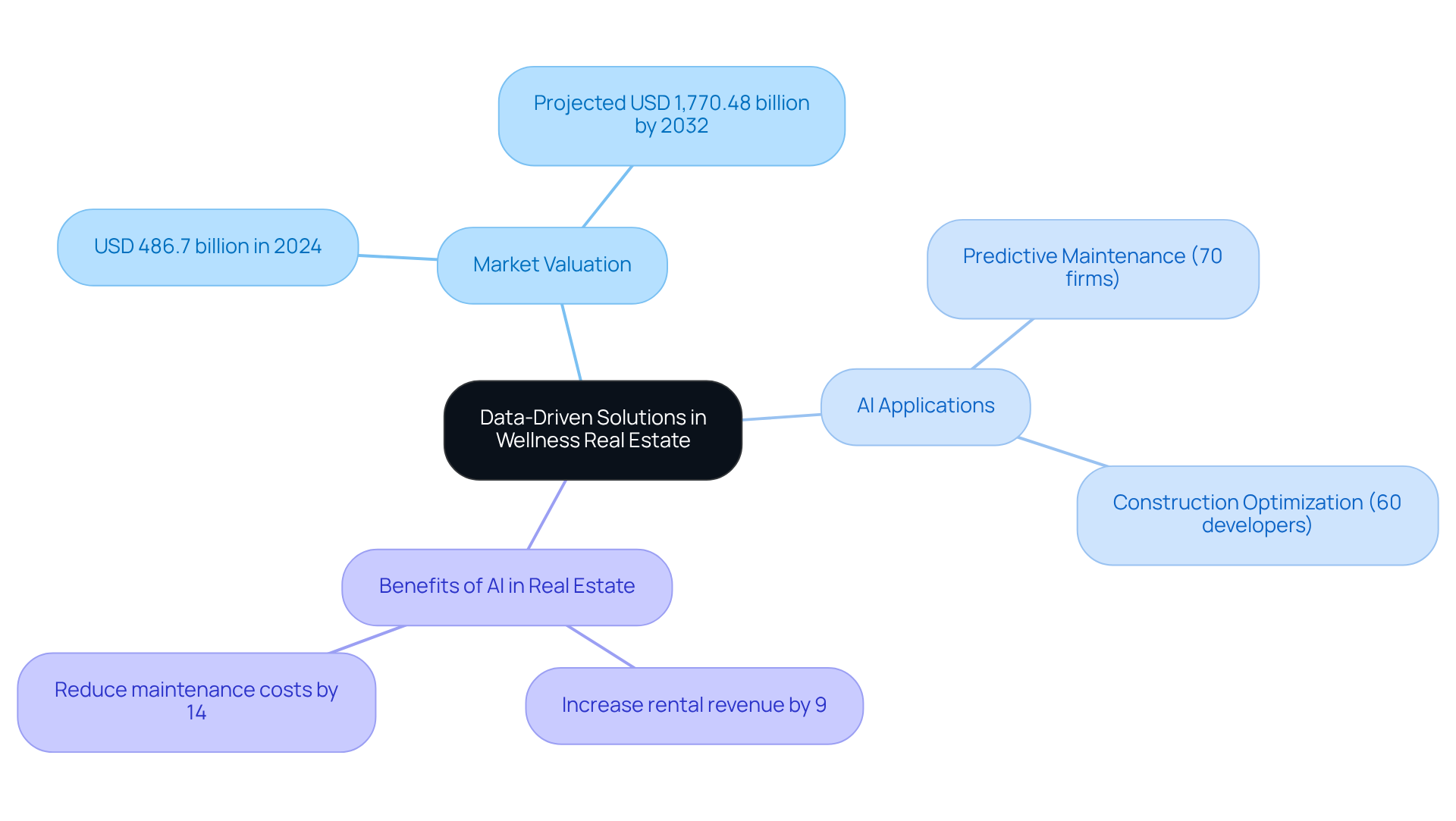
Market Growth: The Future of Wellness Real Estate in 2025
The health-oriented real estate market is poised for significant expansion in 2025, driven by an increasing consumer demand for health-focused living environments. Projections indicate a market value soaring to $1.1 trillion by 2029, up from $501.70 billion in 2024. Therefore, stakeholders must adapt to this trend by integrating principles of wellness real estate into their developments. This growth opens up substantial opportunities for investors and developers eager to capitalize on the rising interest in wellness real estate.
Evident successful investments in wellness real estate are on the rise, particularly among affluent buyers who prioritize features that enhance physical and mental well-being. For instance, the Asia Pacific health property market, valued at $157.65 billion in 2024, is expected to expand to $574.34 billion by 2032, with China commanding 38.42% of this market share. This statistic underscores the region's pivotal role in the health property sector.
In North America, which comprised approximately 44.1% of the health-focused real estate market share in 2024, the market is projected to surpass $748.91 billion by 2032. This highlights the strong demand for assets that promote occupant health. Furthermore, the increasing integration of green building practices with health concepts emphasizes the importance of wellness real estate in promoting environmental sustainability alongside human health. Notably, wellness real estate properties command a price premium of 10-25%, reflecting the financial implications of this trend.
As the market evolves, stakeholders must remain agile, adapting to the changing preferences of consumers who are becoming increasingly aware of how wellness real estate affects their well-being. The emphasis on health as a service distinguishes projects, enhances performance, and meets the demand for healthier lifestyles. Initiatives like Delos Living LLC's WISE program are fostering healthier surroundings, aligning with the broader concept of well-being in property. However, challenges persist due to a stringent regulatory environment for construction, which may impede the growth of wellness-focused developments. With the sector of wellness real estate expected to expand at an extraordinary annual rate of 20%, the opportunities for investment and development in this niche are vast and promising.
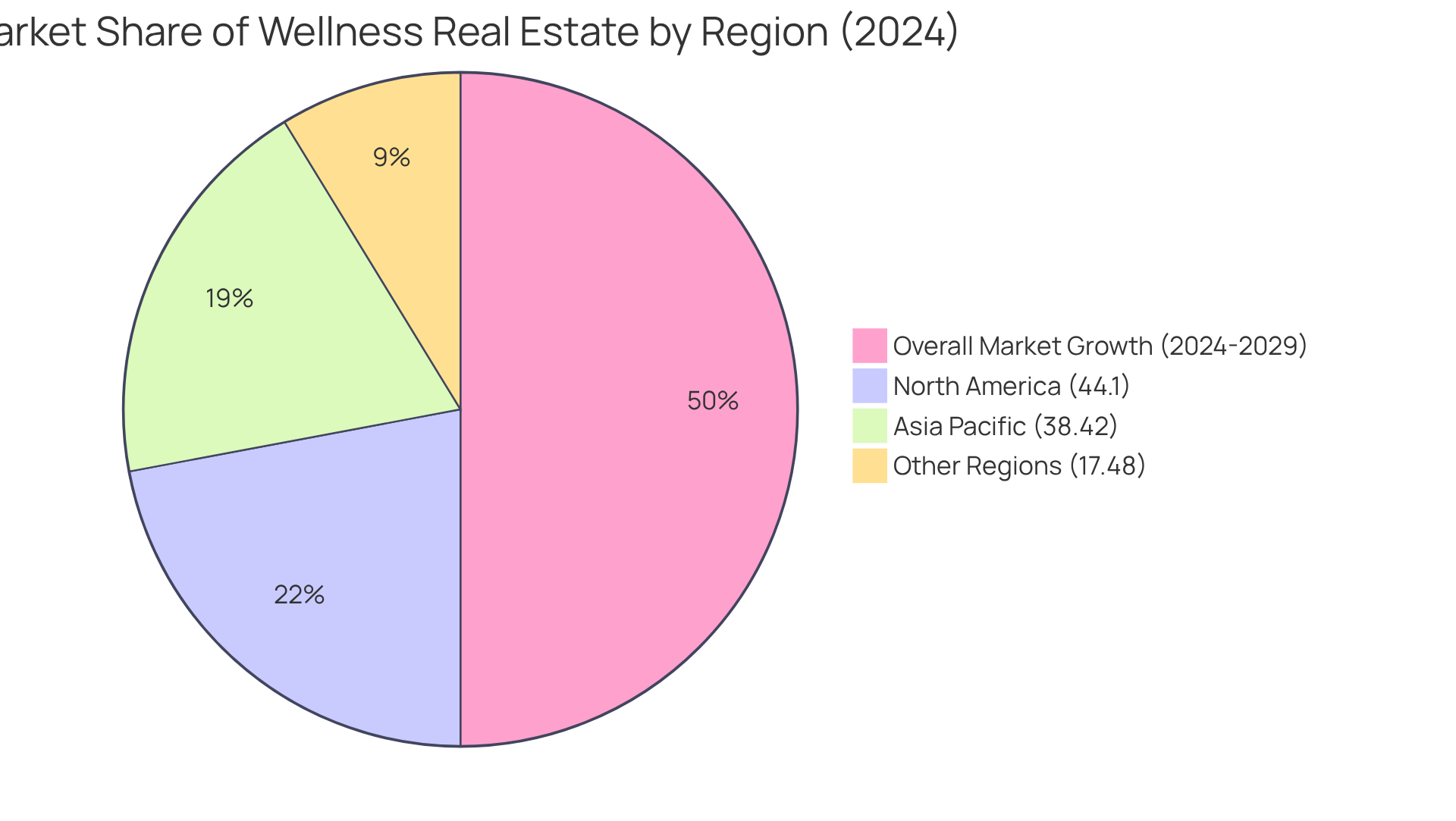
Conclusion
The future of wellness real estate is being shaped by a convergence of trends that prioritize health, sustainability, and community integration. As the industry evolves, the emphasis on creating environments that promote physical, mental, and emotional well-being is becoming increasingly vital. By focusing on health-centric amenities, biophilic design, and virtual fitness solutions, developers are responding to the growing consumer demand for properties that enhance overall quality of life.
Key insights reveal that the wellness real estate market is projected to experience remarkable growth, with significant investments in health-oriented communities and developments. The integration of green spaces and communal areas not only boosts property values but also fosters social connections among residents. Moreover, data-driven solutions are playing a crucial role in optimizing real estate development, ensuring that projects align with the needs of health-conscious consumers.
As the wellness real estate sector continues to expand, it presents a unique opportunity for investors and developers. Embracing these trends is essential for capitalizing on the rising interest in health-focused living environments. By prioritizing the well-being of occupants and integrating innovative design principles, stakeholders can create spaces that not only meet market demands but also contribute to a healthier, more sustainable future.




